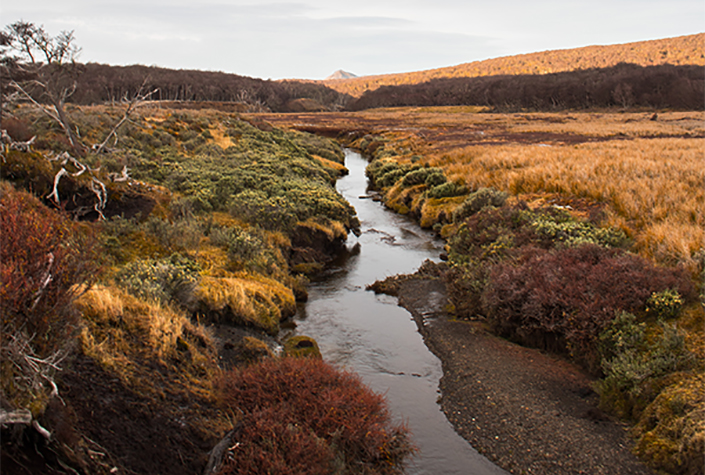Nations must protect their peatlands to slow climate change, study says

Peatlands occupy 3 percent of the global land area, but contain about 25 percent of the global soil carbon stock — equivalent to twice the amount in the world’s forests. And, experts say that huge amount of carbon is not as secure as scientists once thought.
This is cause for major concern, says Julie Loisel, assistant professor in the Department of Geography at Texas A&M University. She and a multidisciplinary team of 69 scientists from around the globe published a paper with a clear message: peatlands hold an enormous amount of carbon, are not as stable as previously thought, and must be fully accounted for in Earth system models.
In fact, the scientists predict that the carbon balance of peatlands will shift from a sink to a source this century.
“That means that instead of absorbing carbon from the atmosphere, peatlands will instead release carbon and exacerbate climate warming, in a positive feedback loop,” said Loisel.
The study warns that more than 100 billion tons of carbon could be released from peatlands by 2100, primarily because of anthropogenic impacts in tropical peatlands. That said, the authors stress this estimate is highly uncertain — ranging from a carbon gain of 103 billion tons and a loss of 360 billion tons — but it highlights the need for improved peatland management and peatland integration in models, which would also help constrain estimates in the future.
Titled “Expert assessment of future vulnerability of the global peatland carbon sink,” and published in Nature Climate Change, the paper combines existing research with survey estimates from 44 leading peatland experts. The authors also agreed that peatland science is a critical research area that needs further support to fully understand the peatland-carbon-climate nexus.
Peatlands store large quantities of carbon within their thick soil layers over thousands of years, which causes them to act as a cooling climate agent on a global scale, Loisel said. This large and dense carbon store is the result of the slow process of belowground peat accumulation under saturated conditions that has occurred over millennia.
“The carbon is preserved in peat because it’s cold and/or wet,” she said. “The last thing we want is for this carbon to be quickly released back to the atmosphere, or go up in smoke.”
Recent large peat wildfires in Indonesia and Russia, to only name a couple, have made the news over the past few years because they can release as much carbon in a few months as total human carbon dioxide emissions in a year.
In addition to wildfires, climate change impacts such as permafrost degradation, rising temperature, drought, and sea level rise are causing many peatlands to emit carbon. And, peatland destruction caused by land-use change also poses a critical threat.
“That’s where we can collectively make a difference,” Loisel said. “We have a responsibility to stop the destruction of peatlands and find sustainable practices.” Lessons must be learned from places like Indonesia, where most peatlands have been destroyed and converted to palm oil plantations, according to the researchers. Achieving a balance between wise peatland use and economic needs has shown difficult, but they hope that their study highlights the need to protect the world’s peatlands with effective policies.
“We must avoid making the same mistakes in the Amazon and the Congo basins, where large peatlands were recently discovered,” she said.

